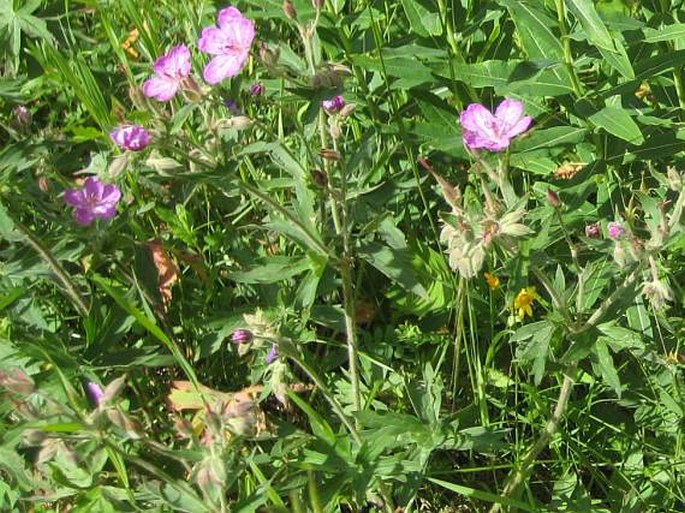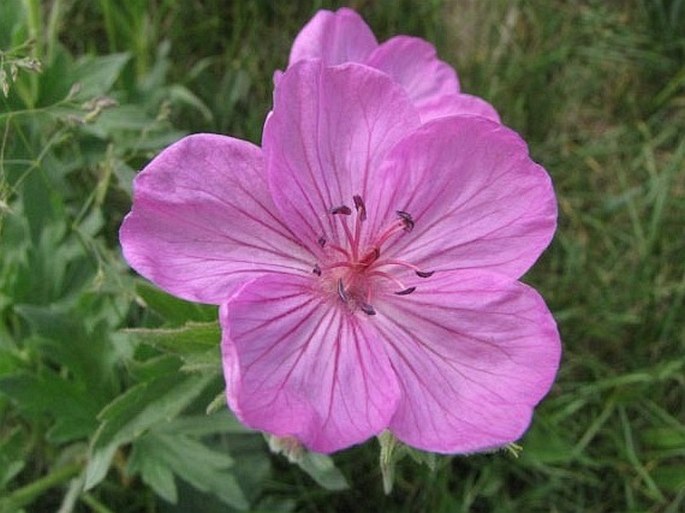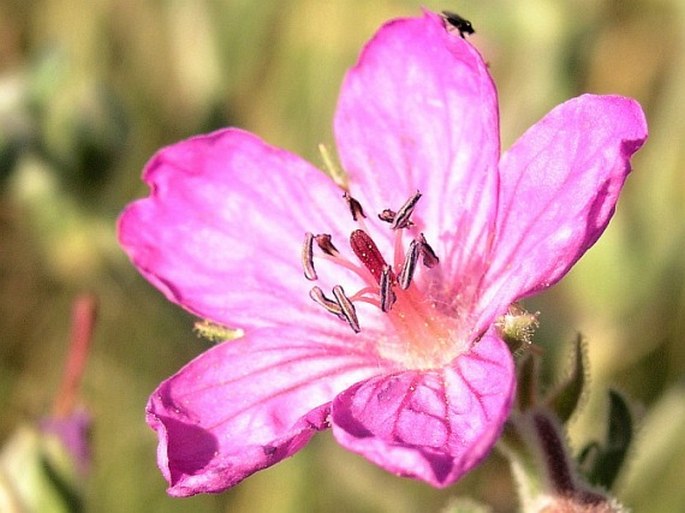Syn.: Geranium attenuilobum G. N. Jones et F. F. Jones
Family: Geraniaceae Juss.

Distribution: West of North America, found from British Columbia to Saskatchewan to north and east California through to New Mexico.
Ecology: Grows in wet and dry meadows, prairie, open forests and their margins, from lowlands to medium elevations up to about 1500 m. Blooms from April to July.

Description: Perennial herb, 25–90 cm tall. Stem erect or semi-erect, branched, hairy with sticky trichomes. Leaves with long petioles, 4–12 cm wide, widely palmate, divided in 5–7 lobes, sharply toothed, hairy with sticky trichomes. Stem leaves are opposite and smaller. Flowers are in terminal several-flowered cyme with 2–6 cm stalks; 3–4 cm across, pinkish purple or lavender, rarely white, with dark veins; sepals 5, 8–12 mm, hairy, awn-tipped; petals 5, 14–20 mm, dark-veined; stamens 10; pistil 1. Fruit is a capsule, 2.5–3 cm long, splitting from bottom upward; seeds long-tailed.
Usage: Native tribes used the infusion from this plant to treat diarrhoea and the astringent powdered root to stop external bleeding.
Notes: There is a theory that this plant is protocarnivorous as the sticky trichomes can digest certain proteins.
Crane’s bill refers to the shape of the seed capsule reminding of a bird’s beak.




These images were taken in Canada, Alberta, Calgary, Nose Hill Park (by Karel Bergmann, summer 2013), and Canada, Alberta, Waterton Lakes NP, Belly River (by Vít Grulich and Alena Vydrová, July 29, 2007).


